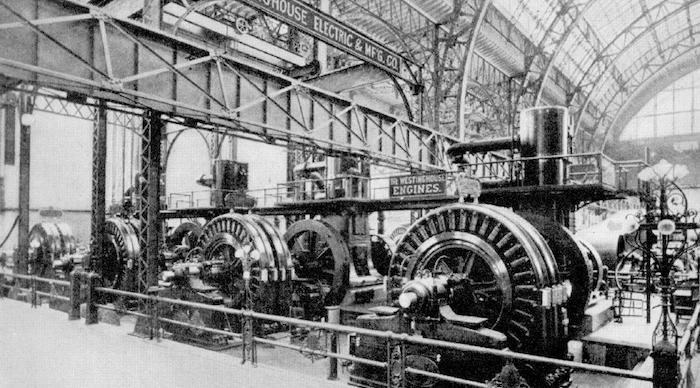Nonstop Discovery: The History of Wireless Charging
When most people hear the words “Wireless Charging” their minds immediately go to Smart Phones or electric cars. Easy to see why. Up to this point these two things have been the most practical and widely adopted applications of wireless charging.
However, even with tremendous improvements taking place in this field, we’re still just scratching the surface of how wireless charging can impact our everyday lives. We’ll discuss more in a future blog post - but picture a self-driving car being able to continually pick-up and drop-off passengers without EVER needing to stop and recharge.
But before I get too ahead of myself and talk about the future of wireless charging, it’s important to understand the trials and tribulations that this technology has gone through. While the average everyday consumer might refer to wireless charging as a new technology, it’s history dates back to the early 1900’s with the legendary scientist Nikola Tesla.
Tesla’s numerous inventions include the AC Outlet and Induction Motor
The Genius of Tesla
Born in 1856, Nikola Tesla earned the nickname “Mad Scientist” as he was tinkering with ideas generations ahead of his time. His long list of revolutionary inventions includes many things we still use today - such as Alternating Currents (AC), X-Ray technology, the induction Motor, and wireless power transmission.
At the time, most of Tesla's inventions went under-appreciated and he didn’t gain the respect he deserved until long after this death. Take one of his most famous inventions, wireless power transmission, for example. In the late 1800’s, Tesla conducted a series of public demonstrations where he transferred power from one device to another without the need for a physical connection.
He used a method known as Inductive Coupling, and while he was never able to put his findings to commercial use, inductive coupling is the backbone of how short range wireless charging systems, such as phone chargers, work today.
But short-range wireless charging was just the beginning for Tesla. His original goal was to create a comprehensive wireless communication system. He wanted an inexpensive instrument that would allow anyone, anywhere, to hear their favorite song, listen to a speech of a political leader, or view a drawing from their favorite cartoonist - instantly.
To realize this dream, Tesla sought the investment of J.P. Morgan. Morgan agreed to give Tesla $150,000 (Equivalent of 4 million today) to build a wireless communications tower at the site of Wardenclyffe.
Wardenclyffe: Arguably Tesla’s most ambitious but ultimately unsuccessful venture
Tesla’s Ultimate Dream: Wardenclyffe
With construction set begin in 1901, a major development caused Telsa to rethink his original plan. His former student, close friend, and biggest rival, Guglielmo Marconi, was able to successfully transmit the letter “S” in Morse code across the Atlantic ocean - something that was previously thought impossible.
Seeing that he was losing the race, Tesla shifted his vision from creating a wireless communications system, to creating a system that would allow for the long distance transfer of electricity without the need for cables.
This is known as Far-Field Wireless Charging and, in the 21st century, is finally becoming a reality. Yet, according to Tesla’s lab notes, he was able to successfully power light bulbs without wires from over 200 feet away, in 1898. It’s mind-boggling really, Tesla was knocking on the door of a historic breakthrough that still isn’t mainstream some 100 years later. It just goes to show how far ahead of his time he really was.
Determined to make this dream a reality, he urged his financial backer J.P. Morgan to more than double his initial investment. Outraged at Tesla for changing his original plan, Morgan refused to increase his investment and Tesla was left on his own.
While the plant was running for a few years after Morgan backed out, Tesla eventually ran out of cash and the site was abandoned in 1905. After this failure Tesla was never the same, and it was reported that he spent most of his remaining years in depression and isolation.
It’s impossible to tell what would of happened had J.P. Morgan continued to invest in Tesla and had his dream of Wardenclyffe realized. Maybe it would of been a massive failure and Tesla was always destined to spend the twilight of his life in isolation, or maybe, just maybe, Tesla would of shocked the world and brought something to the mainstream 100 years ago that many people today still aren’t aware of.
Tesla’s Lesson
Either way, Tesla’s unwavering focus on constant innovation led to groundbreaking inventions that have the shaped the world we live in. From his youngest years, Tesla never stopped tinkering with new and better ways of doing things. Even after a major breakthrough, he was never satisfied. It was always onto the next project, the next idea, the next invention.
Almost all industries can take valuable lessons away from this “mad scientist.” When you achieve success, it’s easy to get complacent with the way things are. But in today’s rapidly changing society, it’s the companies that are constantly focusing on innovation that separate themselves from the pack. Whether it’s a hotel thinking of adding a new technology, or the continual barriers being shattered by world class companies in AI and AR, the companies that succeed are the ones where innovation is Nonstop.




